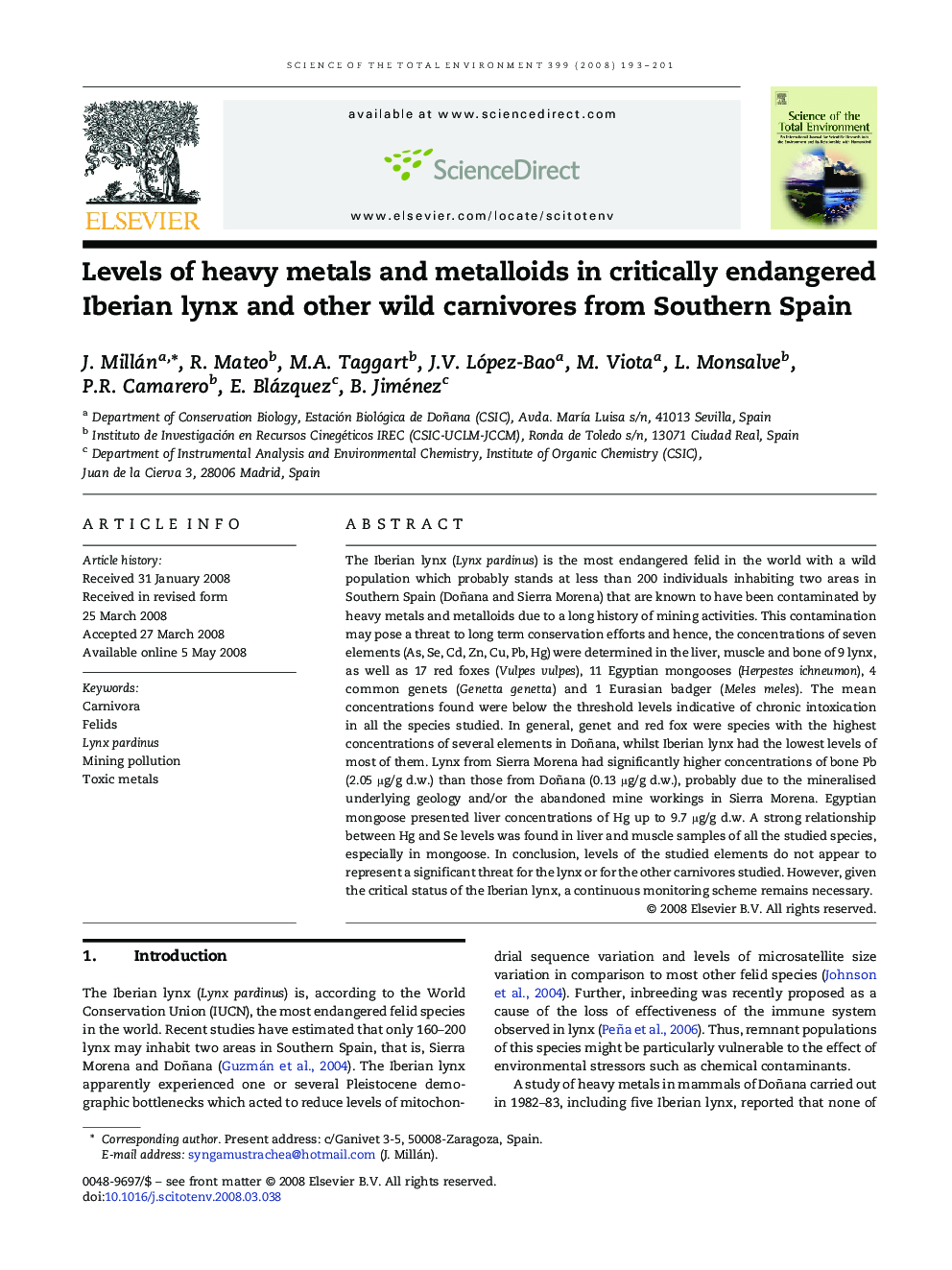| کد مقاله | کد نشریه | سال انتشار | مقاله انگلیسی | نسخه تمام متن |
|---|---|---|---|---|
| 4432625 | 1619920 | 2008 | 9 صفحه PDF | دانلود رایگان |

The Iberian lynx (Lynx pardinus) is the most endangered felid in the world with a wild population which probably stands at less than 200 individuals inhabiting two areas in Southern Spain (Doñana and Sierra Morena) that are known to have been contaminated by heavy metals and metalloids due to a long history of mining activities. This contamination may pose a threat to long term conservation efforts and hence, the concentrations of seven elements (As, Se, Cd, Zn, Cu, Pb, Hg) were determined in the liver, muscle and bone of 9 lynx, as well as 17 red foxes (Vulpes vulpes), 11 Egyptian mongooses (Herpestes ichneumon), 4 common genets (Genetta genetta) and 1 Eurasian badger (Meles meles). The mean concentrations found were below the threshold levels indicative of chronic intoxication in all the species studied. In general, genet and red fox were species with the highest concentrations of several elements in Doñana, whilst Iberian lynx had the lowest levels of most of them. Lynx from Sierra Morena had significantly higher concentrations of bone Pb (2.05 μg/g d.w.) than those from Doñana (0.13 μg/g d.w.), probably due to the mineralised underlying geology and/or the abandoned mine workings in Sierra Morena. Egyptian mongoose presented liver concentrations of Hg up to 9.7 μg/g d.w. A strong relationship between Hg and Se levels was found in liver and muscle samples of all the studied species, especially in mongoose. In conclusion, levels of the studied elements do not appear to represent a significant threat for the lynx or for the other carnivores studied. However, given the critical status of the Iberian lynx, a continuous monitoring scheme remains necessary.
Journal: Science of The Total Environment - Volume 399, Issues 1–3, 25 July 2008, Pages 193–201